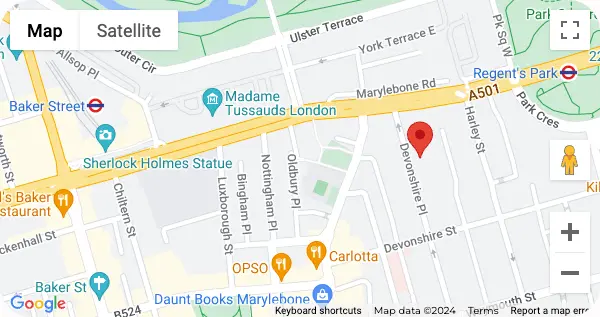What is Malignant Melanoma?
It is a serious type of cancer called melanocytes. The difference of Malignant Melanoma from other skin cancer is that it usually spreads to other parts of the body if not diagnosed earlier. UV rays are the main cause of this coming from the sun or some tanning beds.
Risk factors and genetic predisposition
Anyone can likely develop melanoma, especially those who spend most of the time in broad sunlight, people who have had sunburns, and those who have fair skin, and for most, it’s hereditary. People with certain inherited genetic mutations like CDKN2A or BRAF genes have a greater risk of having melanoma.
Symptoms and warning signs (ABCDE rule)
You will notice early signs of melanoma usually in the moles that you already have or when new dark spots start to appear on your skin. Here’s the ABCDE guide for your reference:
- Asymmetry: The half of the mole usually does not match the other one
- Border: You’ll notice it’s irregular or have some blurred edges
- Color: The shade colors usually vary from brown, black, pink, red, white or blue
- Diameter: The size could be greater than 6 mm
- Evolving: There would be changes in size, shape, and color
Importance of Early Detection
Early detection means having the options to how you could possibly get a successful treatment in treating melanoma. In the case that it hasn’t spread so much to the surface of a patient’s skin, it could possibly be removed completely. People who have been diagnosed at an early stage like Stage 0 or Stage 1 showed much higher survival rates based on some studies.
Screening guidelines in the UK
At the moment, the UK doesn’t have any official national screening program solely intended for melanoma. It is why people are advised to have their regular check-ups on their own skin or if anything comes up.
The importance of mole mapping and skin checks
Mole mapping is the process of taking clear photos of your skin with the purpose of keeping track of your moles and to spot any possible changes over time. It is essentially helpful if you’ve been dealing with a lot of moles.
Overview of Malignant Melanoma Treatment
- Multidisciplinary care teams
One of the essentials in treating melanoma is having a team of specialists that knows exactly what to do. It is not a one-size-fits-all for all cases that is why your doctors will create a specific treatment plan that fits your case.
- NHS vs. private treatment paths
NHS covers all the basics but you might have longer waiting times. Whereas in private clinics, it is usually faster and you’ll also have access to updated treatments. Treatments from private clinics are usually at a higher cost than the NHS treatment.
- You need to have a good support system
It could help to have a good emotional support system like your family or friends as you go along with your medication.
What Are Your Treatment Options
- Biopsy
The process of this is the removal of a whole suspicious mole together with a bit of its surrounding skin. It is essential in diagnosing melanoma and treating it at an early stage.
- Wide Local Excision
The removal of skin usually depends on how deep the melanoma is.
- Sentinel lymph node biopsy
In the case that the melanoma looks more serious, your doctor will then check the status of how widely it spreads in your skin. The process of this is removing the first lymph node that is usually affected. It is essential because it helps them to check how far the cancer has gone.
- Lymphadenectomy for advanced cases
Once the cancer is found in the lymph nodes, other surrounding nodes might also be removed. This surgery helps in the possible spreading of the cancer all throughout your body.
Additional Therapeutic Approaches
- Immunotherapy
This treatment helps the immune system of the body in fighting the cancer cells. It uses a special medicine that makes it easier for the immune system to fight the melanoma cells.
- Specific Therapy
In these cases, targeted medicine like BRAF and MEK inhibitors can be used in reducing the growth of the cancer cells.
- What to expect about clinic trials in UK
Everyone might be eligible to participate in clinical trials that are intended to function as the following: explore new therapies or diagnostic tools.
What Can You Expect On The Procedure
- Prior the Procedure
You must have a fully-body check before proceeding to the surgery to ensure that there are no complications. This will include lots of test results, scans, and other necessary lab tests that are needed depending on your case.
- Anaesthesia options
Most of the surgeries are done with local anaesthetic that numbs the treated area while keeping the patient awake. For more complex operations, general anaesthetic might be used wherein the patient is asleep during the procedure.
- Post-surgical wound care
The treated area should always be kept clean and protected after the surgery. Patients will receive full clear instructions on how to properly clean it as well as how to change its dressing. Make sure to follow all the after care instructions to avoid any complications.
- Possible Risk Factors
Most of the people who have undergone the surgery have recovered without any complications, however, for some cases, there could be some risks that might happen due to several factors. Risks like infection, bleeding, scarring are some of those.
Effective & professional doctor-led Malignant Melanoma at our central London clinic
What to Expect During Surgery
- Outpatient vs. inpatient approaches
Most melanoma removals are usually done on an outpatient basis where most patients could be back home on the same day. While inpatient may be required for cases with additional health concerns.
- Time under anaesthesia and surgical timeframes
The duration of the surgery usually depends on the complexity of the case. It usually takes 30 to 60 minutes for excisional biopsies while WLE combined with lymph nodes might take several hours.
Malignant Melanoma Recovery Timeline
- 1 to 3 days: You’ll most likely experience some tenderness in the treated area as well as feeling swollen and some bruises. This is completely normal and taking pain killers might help in managing it.
- 1 to 2 weeks : You can now remove the sutures at this point. Make sure to consult with your doctor about the possible follow-up visits so they could assess further the healing of your wound and check if there are any signs of complication as you remove the sutures.
- 2 weeks onwards: The scars due to the surgery are slowly improving by this time. You can ask your doctor for the appropriate scar management which usually involves applying gel, massage, or applying any cream against harsh sunlight. Make sure to have a regular skin check up and follow-up with your doctor.
When Can I Drive After Removal of Malignant Melanoma from the Leg?
- Guidelines for leg surgeries
This is a case to case basis so it is best to consult with your doctor. But for most patients, especially during the first few weeks after the surgery, patients are advised to take full rest and avoid any strenuous movement.
- Legal and safety considerations
It is best to refer to the UK driving law after having the surgery. Some insurance providers might also require a few documents for those people who have undergone the surgery.
- Consulting with a specialist
You should consult with your doctor regarding this matter and get a driving clearance if needed.
Stages of Melanoma and Why It is Important
Stage 0 to Stage IV
Melanoma is staged based on the following:
- Stage 0:Refers to outer skin layer
- Stage I: Thin melanoma
- Stage II: Thicker melanoma
- Stage III: Spreading to lymph nodes
- Stage IV: Involvement of other body organ
TNM system explained
The TNM staging system includes the following:
- Tumour: Depends on the size and thickness of the melanoma
- Node: Lymph nodes involvement
- Metastasis: Spread to distant organs
How melanoma stages affects treatment plans
The surgery may be enough if the melanoma is detected at an early stage. In cases of late detection, additional treatment or medication may be required depending on the stage and the spread of the cancer cells in the body.
Frequently Asked Questions
- Do I need to have the surgery?
Yes. Surgery is required because it is the most effective method in treating melanoma.
- Is there any further treatment once the surgery is done?
It actually depends on your case. Your doctor might require you additional treatment if your condition is at high risk.
- Will it be back again after some time?
It usually depends on the thickness of the tumour and its current stage. It is why regular follow ups are very essential to reduce the risks of possible recurrences.
- Will I be completely cured after the procedure?
Yes, especially when it is detected at an early stage. But it is still a case to case basis. For complex cases, it might take a longer treatment timeline because of other health factors.
- How should I take care of my skin moving forward?
By having regular follow-ups with your preferred clinic and regularly monitoring if there are unwanted body reactions that may rise.
Reserve a mole removal appointment
One of our experts will be more than happy to answer any questions you have.
Book AppointmentEmma Ashwood
★★★★★
Very informative.
21st November 2025
Dr Hasib Ur-Rub
★★★★★
The best
22nd November 2025
Sophia Waterman
★★★★★
Really professional, caring , knowledgeable and nice manner. Always a pleasure
3rd December 2025








